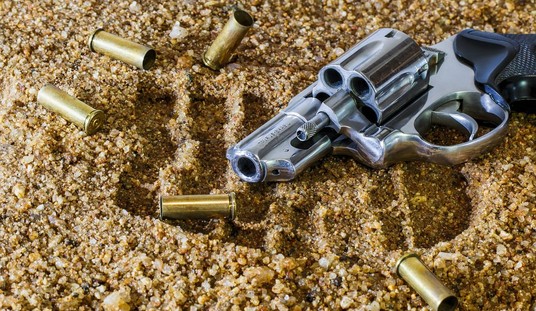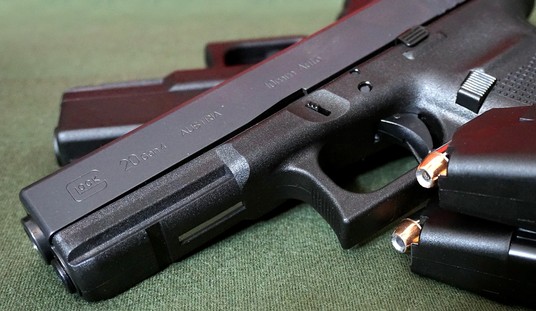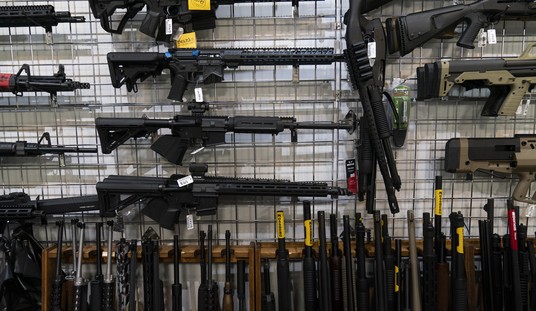This is disappointing news out of Maryland’s Eastern Shore, where county council members in Wicomico County are hitting the pause button on a resolution declaring the county a “Second Amendment Preservation County” after the local sheriff requested that the resolution be withdrawn from the council’s agenda.
Sheriff Mike Lewis made the request late Monday night, just hours before the council was to meet on Tuesday morning, and just a few weeks after Lewis originally asked that the council approve the resolution.
Sitting before the council the next morning, Lewis said he has felt the county’s pain through several emails, phone calls and out on the street. He also said the Unity Rally he watched the preceding evening in Salisbury helped him come to the decision.
The sheriff said he requested the resolution be “delayed indefinitely” for a couple reasons — but chief among them was his recognition that “this county is hurting.”
The county may be hurting, but I’m not sure how showing support for the Second Amendment is going to exacerbate the problem. You can read a copy of the resolution here, but there’s nothing objectionable about the language.
Still, the resolution had already run into opposition from the Left in Wicomico County.
“Legally meaningless, but they undermine the Rule of Law, foster distrust between law enforcement and communities,” read a tweet from Wicomico County’s branch of NAACP, “confuse people into thinking they don’t need to follow gun laws, and may deter others from reporting individuals who may hurt themselves or others.”
A group of local organizations — including Mary Ashanti, president of Wicomico County NAACP Branch 7028-B, Amber Green, co-chair of Salisbury’s Lynching Memorial Task Force, Jared Schablein, chair of the Lower Shore Progressive Caucus, and many others — came together to call itself “Wicomico for Common Sense Gun Safety Coalition.”
I completely disagree that the resolution undermines the rule of law or fosters distrust between law enforcement and communities. The sheriff himself called the resolution “largely ceremonial” when it was first introduced, and I doubt that most residents would even be aware of the resolution’s passage or postponement, so I highly doubt that the resolution would confuse people into thinking they don’t need to follow Maryland’s gun laws.
The opposition to the Second Amendment resolution also argued that it suffered from a “failure to take into account racial disparities in how minorities are treated on gun ownership,” which is an interesting position to take given that the group is also calling for more “common sense” gun laws that would also likely be enforced in a racially disparate fashion.
It’s true that the Second Amendment Preservation Resolution didn’t mention race at all, but there’s no reason council members couldn’t have changed the language to include a statement like “The right to keep and bear arms is a right of ALL law-abiding Americans, regardless of race, religion, sexual orientation, or political viewpoint.”
It would have been a simple thing to make the language of the resolution as broad and all-encompassing as possible, but instead, the resolution’s simply been pushed off until some indefinite date in the future. Most likely, it will simply disappear from the council’s agenda, never to return. It’s a shame because I suspect that a real conversation with some of the opponents of the resolution would have yielded far more agreement with supporters than both sides might have realized.
The co-chair of the Salisbury Lynching Memorial Task Force was among those objecting to the resolution, for instance. The first of the three lynchings in the county’s history involved a black man who was brutally murdered by a mob after he shot and killed a man in 1898.
King claimed self-defense but was denied due process when a mob broke into the jail where he was held and attacked him, according to the release.
The mob kicked, beat, clubbed and hanged King before shooting his body over 50 times.
News of the lynching of King was reported far and wide, in both the white and black press. The Los Angeles Herald, for instance, informed readers of the murder just hours after it had taken place.
Garfield King, a negro aged 18, was taken from the jail at this place early this morning and hanged to a tree and almost shot to pieces. He was awaiting trial on the charge of having deliberately shot Herman Kenny, a white boy. The shooting was done on Saturday night, and last night Kenny died. About 2 a.m. a number of men rode into town and demanded the keys to the jail, which the Sheriff refused to surrender. The lynchers then broke the jail doors down, forced open the cell in which King was confined and dragged him out, the negro all the whl’e fighting and pleading for mercy. A line was tied to his neck, thrown over a limb and the unfortunate boy was strung up. The rope broke and he fell apparently unconscious. After lying in this condition for a few minutes he regained his feet and made an effort to escape. His captors shot him through the body and kicked him without mercy, then placed the rope around his neck and strung him up a second time. As he dangled in the air a volley of bullets was fired into his body, which was left hanging while the lynchers disappeared.
Here’s a case where the Lynching Memorial Task Force could actually show support for the right to keep and bear arms while using that support to remind residents that their forefathers weren’t always as tolerant of the idea of shooting someone in self-defense.
The lynching of Garfield King took place in 1898, at a time in which black Americans were increasingly calling on their compatriots to find refuge in the Second Amendment. In his book “Negroes and the Gun: The Black Tradition of Arms,” Fordham University professor Nicholas Johnson relays some of the many calls to arms from black leaders during that time period.
In March of 1898, just a few months before King was murdered by a mob, Bishop Alexander Walters of the AME Zion Church penned a letter to the New York Age newspaper proclaiming, “after the late outrages perpetrated against postmasters Lofton of Hogansville, Georgia and Lake of Lake City, South Carolina for no other reason than their race and color… it becomes absolutely necessary that we organize for self-protection.”
Three years later, black journalist W.A. Pledger told members of the Afro-American Press Association that lynch mobs “are afraid to lynch us where they know the black man is standing behind the door with a Winchester.” The Winchester repeating rifle was the AR-15 of its day, and civil rights advocates like Ida Wells encouraged blacks to keep a repeating rifle in homes as an anti-lynching tool.
Without a doubt, the Second Amendment hasn’t been exercised equally by black and white citizens throughout Wicomico County’s 153-year history. There’s no record of any white man who claimed to have shot a black man in self-defense being strung up by the neck by an angry mob, for instance. In the Reconstruction-period after the Civil War, armed white militias formed to prevent free blacks from voting in elections. Wicomico County embraced Jim Crow, and only desegregated its schools in 1969.
There’s a lot of painful history lurking in Wicomico County’s collective past, but that doesn’t make the present embrace of the Second Amendment ill-conceived or irrelevant. In fact, it’s in troubled times that we depend on our Second Amendment rights the most. Despite what the sheriff says, now is the time to demonstrate real progress has been made in the county than by formally embracing, for all, the American right to keep and bear arms and the human right of self-defense.









